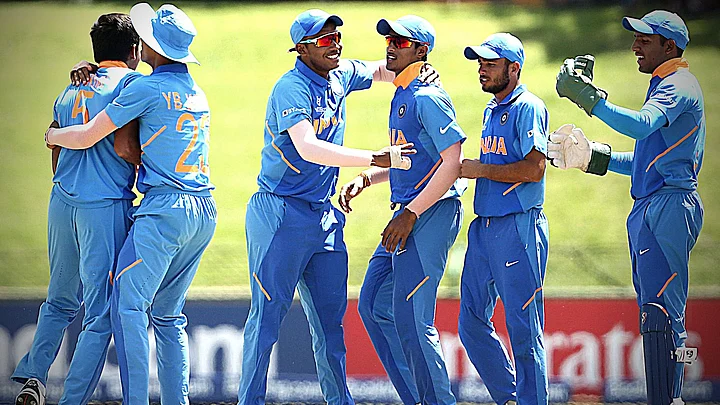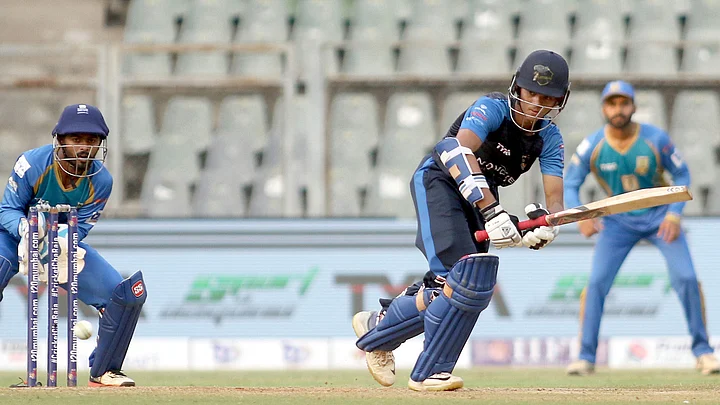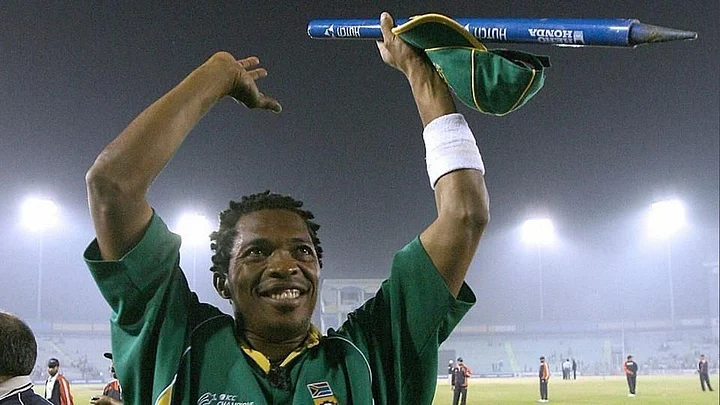It’s not difficult to feel the pulse of a nation for a sport that thrives on being a cricket-fanatic country. From dingy lanes to plush cricket academies or on tiny strips of land next to railway tracks, one can often find kids of all ages using the most rudimentary objects to form cricketing gear and play the game like they are out playing a World Cup final.
The rules are tweaked based on the condition of the street, as are the equipment.
A bat can often be a wooden plank, a tennis racquet, exam boards or even a stump — usually the middle one has to sacrifice its duties and play the traitor’s role to avoid the the batsman from being dismissed.
Replicating a ball, although it’s more easily available, however, spikes up the creativity — from sheets of paper tied using threads and rubber bands to pieces of cloth bundled usually inside a sock.
Varied Background

In short, it’s not easy being a cricketer in this part of the world. It’s an expensive game unlike football or badminton and yet, somehow, the sport has the most followers in the country.
The problem is, it’s often difficult to pump in economics inside a brain that barely knows how to read numbers. Passion trumps poverty; dreams outlast duties.
The India U-19 team that’s on the verge of defending the World Cup also has similar stories. From the son of an army man to that of a shopkeeper, the pool is a unit that’s difficult to pull under the same economic or social banner.
The highest run-getter of the World Cup so far, Yashasvi Jaiswal’s journey of selling panipuris for a living to donning the Indian team’s jersey is also a tale that tells one the story of how drastic the transformation can be for a cricketer.
The problem, however, is not always an economic one.
For example, in the case of Ravi Bishnoi, who currently is the highest wicket-taker for the side at the ICC Under-19 World Cup, his father being the headmaster of a school had resolved that aspect.
However, as is the mentality with most middle-class Indian parents, his father wanted him to focus on his studies and get a ‘decent’ job. It only had a snowballing effect once Bishnoi started heading back from the trials dejected after being left out.
Rags to Riches

It was also difficult for a father to see his kid crying for nights after every rejection. Ironically, giving up on one’s dreams was what a headmaster guided a young mind but then again when have kids taken advices on serious notes.
Years later, Bishnoi was snapped up by Rajasthan Royals for Rs 2 crore at an IPL auction.
Among those who would join him in the side from the under-19 squad is Yashasvi Jaiswal, for whom the franchise splashed out another Rs 2.4cr.
From shifting states to reach Mumbai, and later sell panipuris, the latter had to endure a lot of hardships. He left his parents behind in Uttar Pradesh; his father a shopkeeper and mother a housekeeper couldn’t anyway provide the funds required for his coaching.
In Mumbai, the teenager first lived with his uncle, later shifted to a dairy owing to lack of space and eventually was thrown out since he failed to report to work regularly.
Jaiswal spent nights at a tent in Azad Maidan before a coach spotted him and provided him shelter. Although his century against Pakistan in the semi-final has now made him a household name, not many would have dared to dream such the day he had left home.
Making Their Parents Proud

However, unlike Yashasvi or Bishnoi, there are also a few who did not even have the luxury of being guided by their parents. While Atharva Ankolekar lost his father at the age of nine, Priyam Garg had lost his mother when he was 11-years-old.
However, the personal setbacks hardly emerged as road blocks. Neither did the fact that Garg’s father was a milkman and Ankolekar’s mother a bus conductor.
Today, Garg is the skipper of the India under-19 side at the World Cup and may follow the likes of Virat Kohli and Prithvi Shaw to bring home the silverware.
And Ankolekar? Well, there’s isn’t a better testimony of one’s skills if one manages to take the wicket of the legendary Sachin Tendulkar. The batting great was so impressed on being dismissed by the teenager at a training session of the Mumbai Cricket Association in 2010; he gifted Ankolekar a pair of autographed gloves.
There are several such stories of the squad; one that started out learning a different grammar of the sport out on the streets but will realise their dream together if India bag the title for a record-extending fifth time.
(At The Quint, we question everything. Play an active role in shaping our journalism by becoming a member today.)




